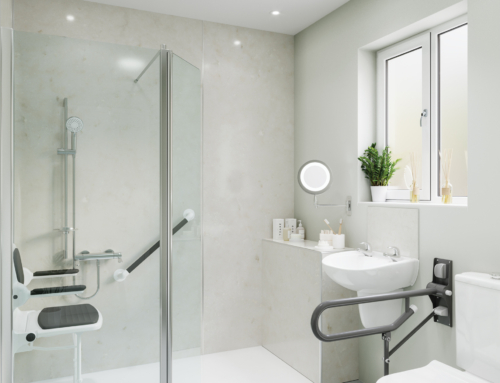Top 5 considerations for lighting in a bathroom
Bathrooms have to cater to the needs of all family members within a household, both young and old. Everyone needs good levels of light but as we get older these needs increase as less light reaches the retina and visual clarity deteriorates.
In fact, most people at the age of sixty need three times more light than when they were aged 20.
Two million people in the UK are currently living with sight loss and around 20% of those are aged seventy-five and over*
Whether individuals have a visual problem or just wear glasses, the chances are that the bathroom is where they are likely to remove their glasses to wash, shower or shave. This means lighting levels are critical to enable people to carry out these essential activities. Effective lighting can make a huge impact to the look and feel of any bathroom so it’s important to always consider a number of factors when planning any bathroom installation.
Listed below are the 5 main considerations to bear in mind when selecting lighting for the bathroom:
1. Optimise your light sources
It is important that the right light fittings are used in the bathroom; they must be protected from moisture and labelled as suitable by the manufacturers (as per ‘Part P’ and ‘Part L’ of UK Building Regulations). In addition, it is recommended you:
- Make the most of natural lighting by installing clear glass, if this does not compromise dignity
- Install a pull cord with an ergonomic, heavy-weighted pull which has a contrasting colour from the walls so its position is clearer in dim light
- Provide additional task lighting by using appropriate halogen or small LED lights
- Fit lighting in the bathroom that is similar to adjacent rooms so eyes can easily adjust when moving between rooms.
2. Install dedicated lighting for bathroom mirrors
Lighting from above can often create shadows and lines across people’s faces when shaving or putting on makeup, therefore a vanity light or pair of lights placed on each side of the mirror will provide the best lighting for detailed tasks.
3. Ensure ‘Lux’ levels are fit for purpose
Use a Lux level of between 300 and 500 in the main bathroom area to enable daily activities to be carried out with clarity.
4. Avoid glare by choosing the right decorative fittings
Glare can prove to be a painful problem for people with some eye conditions. Using matt or silk paint on walls and non-reflective tiles within shower areas can reduce this.
5. Take contrast into account
Ensure there is sufficient colour contrast between any grab rails used on the walls or showering area. This can be achieved by using coloured grab rails or having darker tiles or wall colour to achieve improved levels of contrast.
* Source – RNIB http://www.rnib.org.uk









